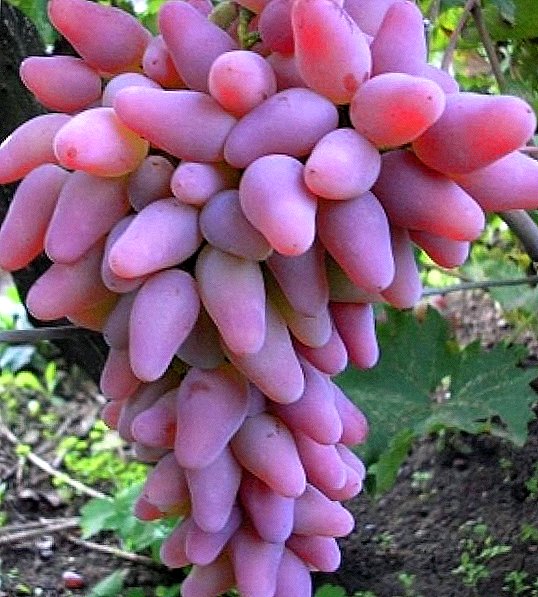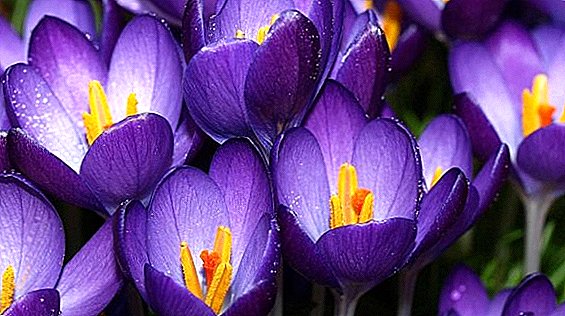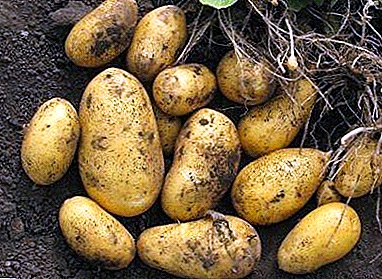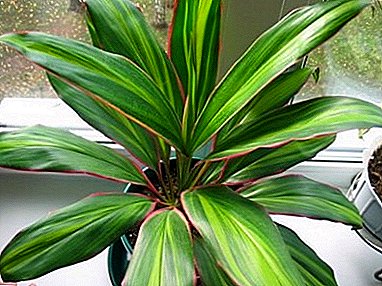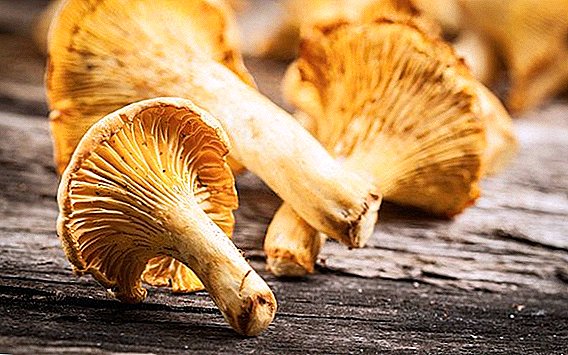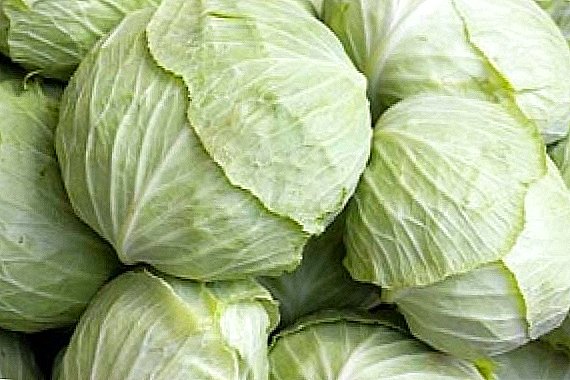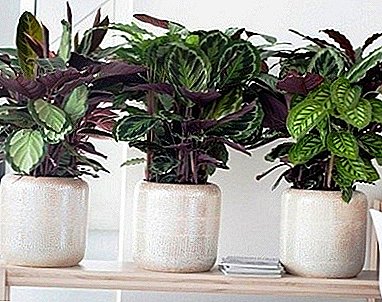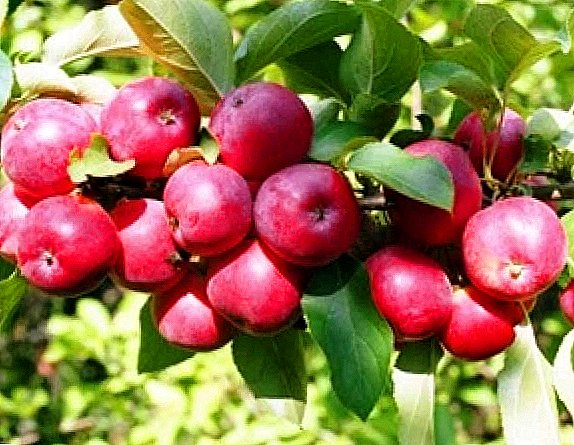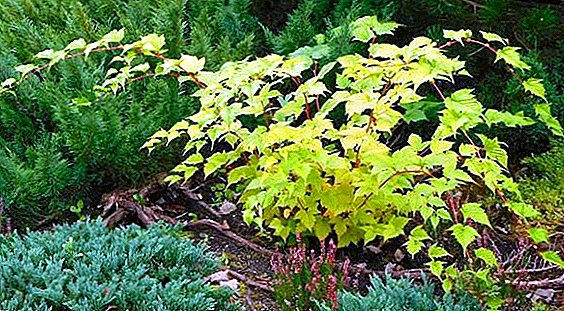
Stefanandra is a perennial flowering shrub originating from Japan. This perennial is widely used in ornamental gardening. The main advantage of the semi-shrub, which turns it into a real highlight of the garden, are winding stems. We invite you to familiarize yourself with common types of stefanandra, as well as learn the rules for planting and caring for this unusual plant.

Botanical description
Stefanander is a squat, spreading herb of the Rosaceae family. The homeland of the plant is considered to be East Asia (Japan and Korea). The annual increment in grass is insignificant, but the adult shrub reaches large dimensions: 2-3 meters in height, 2-2.5 in width. Luxurious crown is formed from decorative branches, under its own weight taking an arcuate shape. Young stems - thin, winding, painted brown. Stefanandra foliage is very attractive. Sheets are alternately fixed to the shoots with short cuttings. Leaves - carved, dissected in shape, ovate with teeth at the ends. On leaf blades there are sawed stipules of green color. The color of the foliage itself is bright or light green, and in autumn the grass turns yellow or orange. Flowers - small (up to 5 mm), bisexual, collected in rare panicles. Petals - pointed, white. The aroma of the green is pleasant, but weakly expressed. The fruit is a small multi-seedling with a dense dry pericarp.
Did you know? Strangely enough, stefanander is ranked as one family with many known fruit and berry crops, such as apple, pear, cherry, sweet cherry, apricot, plum, rowan and others. Moreover, among all members of the family, only stefanander is cultivated as an ornamental plant.
Kinds
The genus consists of four species, of which two species are widely distributed in horticultural culture: notch leaf and Tanaki. These two species very brightly look in the neighborhood with coniferous trees.
Notched leaf
Stefanander notched leaf can reach 1.5-2 meters in height and 2-2.5 meters in width. The shrub grows and expands rather slowly, reaching its maximum size only after 25-30 years. Krone - mesh, deeply dissected, has a red-brown color. The leaves are placed on short cuttings. The plant retains a decorative appearance throughout the warm season, and in the fall acquires bright colorful shades. The flowering is rich, the flowering phase begins from the beginning of summer and lasts until August. In the cold winters, Stefanander froze to the level of snow cover, but soon recovers, albeit to the detriment of flowering.
Gardeners have created a separate, unusually spectacular variety of notched-leaved stefanandry - Crisp. This variety is distinguished by small dimensions and ranks among the dwarf species. The average height of the shrub is 50-60 cm, and the width - 2 meters. On the site Crisp is like a thick pillow. Inclined arcuate and entwined stems create a continuous booth. The stems are often in contact with the surface of the soil, then rooted and form a new green. The leaves are more dissected, have a wavy or folded structure. On the yellowed leaves are observed orange and yellow specks. 
Tanaka
Stefanander Tanaka (Tanake) is a plant characterized by large dimensions: 2 meters high and 2.5 meters wide. The leaves are much larger than other species, capable of reaching 10 centimeters in length. The crowns of the leaves are double-blade, the shape of the leaf plate is heart-shaped, pointed. Bottom veins have a rare pubescence. With the onset of autumn, the foliage is transformed into a purple or burgundy color. The inflorescences are also larger than other varieties, reaching 10 cm in diameter. The size of the bud of a flower is 5 mm. The flowering phase begins a month later than the previous varieties and lasts from July to August. 
You may also be interested in such semi-shrubs: "Iglitsa", "Echeveria", "Flower pentas", "Tsinerariya", "Japanese euonymus".
Where to plant a plant?
Next, we select for stefanandry place on the garden plot.
Light or shade?
Stefanander develops safely in the sunlit places. Planting in partial shade and even in the shade is also permissible, however, in this case the bush will grow slowly, and the inflorescences may not bloom. So that you do not have to transplant the plant, initially choose a good sunny plot of land.
The soil
The soil for planting stefanandry should be fertile, loose, moist. Pick loose sand-peat substrates. Can be planted in loamy or clay mixtures. Mix heavy clay soil with sand and peat. The acidity of the soil should be neutral or slightly acidic. Be sure to take care of good drainage, for this use pebbles, gravel, broken bricks or large crushed stone.
Important! Drainage is especially important if you have heavy clay soil in your garden.
Planting and Breeding Rules
Stefanander is propagated by seeds and vegetatively (green and semi-woody cuttings).
Seeds
Seeds for growing stefanandra desirable to purchase in specialized markets or in stores. Seeds do not need stratification, they are sown in open ground in May. For this purpose, suitable light and fertile substrate. You can make crushed charcoal. Water the seedlings moderately. Grown up seedlings can thin out. When sprouts get stronger, carefully transplant them to a permanent place of growth.
Before you start planting young plants in open ground, you need to prepare a place for them:
- Dig a small hole (50-60 cm in diameter, 60 cm in depth).
- At the bottom of the pit, place pieces of brick or large crushed stone.
- Pour a layer of sand (10-15 cm).
- Add soil (sand and leafy humus mixed with organic fertilizer).
Important! Draft and strong cold wind are the enemies of Stefanandra, so try to avoid landing on completely open territories.

Cuttings
Cutting is the simplest way to reproduce Stefanandra, which will not cause you additional questions. Cuttings are cut in summer and they take root very easily.
Perform cutting as follows:
- Cut off one-year or two-year-old stems, divide them into cuttings (one edge should be smooth, the second one should be beveled).
- Within 5-7 hours, keep the cuttings in a special tool - a root formation stimulator.
- Then plant the cuttings in containers with soil, deepening them by 3-4 cm.
- Water the young plants and cover with a film (the film will help to create a greenhouse atmosphere).
- Ventilate and moisten plants regularly. In such conditions, the roots are more likely to form roots.
- Replanting stefanander in open ground can only be a year later. The distance between lush bushes should be at least 2-3 meters.
How to care?
Procedures for the care of stefanandra consist in timely watering and high-quality top dressing of the soil, as well as in planned trimming of the shrub.
How often to water?
Stefanander is a sufficiently moisture-loving plant. With a lack of moisture foliage may turn yellow and wilted. Moisturize the shrub 2-3 times a week. Uncontrolled watering is also harmful, as it can rot the rhizome. The best option is when the soil will dry out between irrigation procedures. In dry and hot weather, enhance watering.
Pruning
In the spring, after the flowering phase, the stefanandre requires sanitary pruning. Removing unsuitable branches helps rejuvenate the bush and form a crown. To the base, remove frozen and dried and old branches. Also try to get rid of thickening shoots, as too lush thickets lose their decorative appearance.
From the lack of sunlight, the stalks in the middle of the bush tend to shed their leaves. Therefore, try to control the green growth at the side processes and near the roots.
Did you know? The yellow rays of the sun that we see in our gardens are actually white. Sunlight turns yellow due to passing through the atmosphere of the Earth.

Top dressing and fertilizer
As for feeding, then Stefanander requires special attention. Fertilizers contribute to the formation of a lush crown. In the spring add nutrients with a nitrogen content. Bring herbal or pometny infusion. They should be prepared in advance: Mix one part of the litter with ten parts of water. Infuse liquid for 8-10 days, and at the end stir. Pour the finished organic mixture at the root of each bush.
You can also use humus. Add a mixture of humus to the area of the circle of the trunk to a small depth (1 bucket of the composition per 1 bush).
In the fall, use mineral fertilizer and fertilizer.
Or you may be interested in ornamental shrubs with white flowers for your garden ..
Disease and Pest Resistance
Stefanander is practically not attacked by pests. In rare cases, the plant may suffer from diseases such as powdery mildew, rust and gray mold. In the case of the discovery of these ailments, immediately treat the shrub with special fungicidal preparations.  As a preventative measure, provide your plants with the optimal growth conditions described above.
As a preventative measure, provide your plants with the optimal growth conditions described above.
Cultivation and reproduction of stefanandra is a fascinating and not troublesome task. Having planted this spectacular ornamental plant in your garden, for many years you will enjoy its beautiful appearance.


